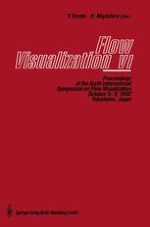1992 | Buch
Flow Visualization VI
Proceedings of the Sixth International Symposium on Flow Visualization, October 5 – 9, 1992, Yokohama, Japan
herausgegeben von: Prof. Yoshimichi Tanida, Prof. Hiroshi Miyashiro
Verlag: Springer Berlin Heidelberg
Enthalten in: Professional Book Archive
